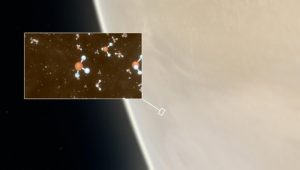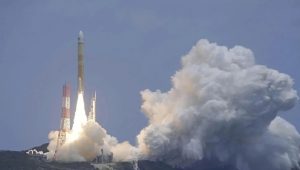Using the data from the Giant Metrewave Radio Telescope (GMRT) near Pune, astronomers from the Indian Institute of Science (IISc), Bengaluru, and McGill University, Canada, have detected a radio signal emitted by atomic hydrogen in an extremely distant galaxy. The signal has crossed an astronomical distance that is the largest so far by a fair margin. The findings were published in Monthly Notices of the Royal Astronomical Society.
Atomic hydrogen is the basic fuel required for star formation. It emits radio waves with a wavelength of 21 cm, which can be detected using low-frequency radio telescopes such as the GMRT. So far, the most distant galaxy detected using 21 cm emission was at redshift z = 0.376. However, with the latest GMRT data, Arnab Chakraborty of McGill University and Nirupam Roy of the IISc detected the radio signal with redshift z = 1.29.
The detection of the special radio wavelength from the most distant galaxy will help astronomers investigate how the earliest stars form. As it is the first confirmed detection of strong lensing of 21 cm emission from a galaxy, it also opens up exciting new possibilities for probing the cosmic evolution of neutral gas with existing and upcoming low-frequency radio telescopes.















